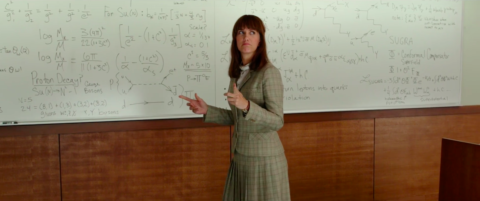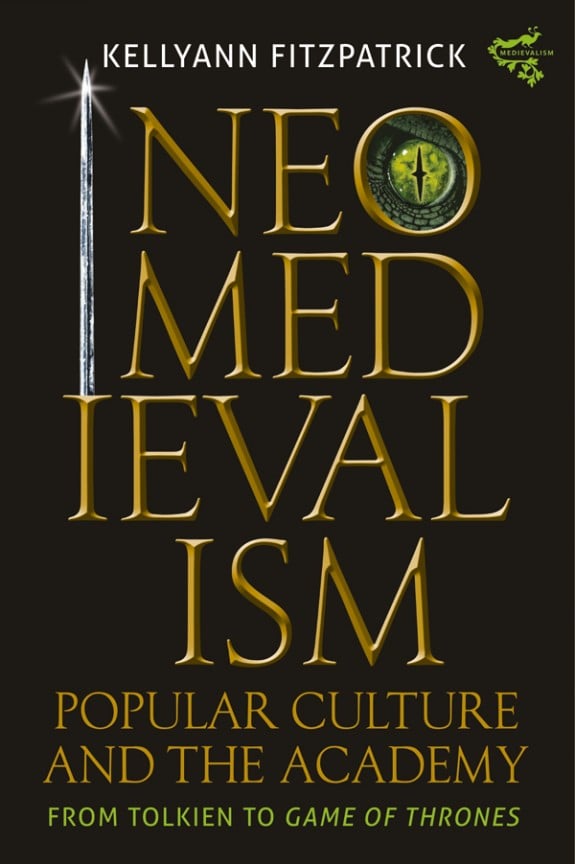This is the third part in a series on the intersections of technical communication in the tech industry and the academy. Read the series introduction here.
One of the great privileges of working at RedMonk is that I get to go to the amazing conferences that we host. While I spoke at Monktoberfest 2018, I am also headed to Monki Gras this week, this time primarily as part of the audience and as a big fan of this year’s conference theme of Accessible Craft.
Monki Gras, the tech conference about Software, Craft, and Tech Culture, returns January 31 and Feb 1st 2019.
The theme this year is Accessible Craft: Creating great experiences for everyone.https://t.co/8VeadDAmYo
— Monki Gras (@monkigras) October 29, 2018
However, as I also have a background in academia, I began 2019 with a flight to Chicago to attend the 2019 Modern Language Association (MLA) Convention. The MLA is a professional organization for teachers and scholars of (modern) languages and literatures. While the MLA is a separate entity from the more writing focused Conference on College Composition and Communication and the tech comm focused Association for Teachers of Technical Writing, academics in literary, composition, and communication fields might find themselves at events sponsored by one or all of these organizations in a given year depending on overlapping interests and professional specializations.
For me, alternating between tech industry events and academic conferences has really emphasized the differences between the conventions and formats associated with each type of event. It has also shed light on some of the problems that transcend disciplinary and industry divides; I share some highlights below.
Talks are more fun than papers
My experience with academic conferences have been primarily with those related to the humanities (the typical format for academic conferences in other disciplines may differ from what I have seen). I have attended large multi-track events like the yearly convention sponsored by MLA, multidisciplinary conferences like the International Congress on Medieval Studies, and smaller single-track symposia and colloquia organized around specific themes. Regardless of the size of the event, the conference sessions themselves follow prescriptive formats that include workshops and roundtables. By far the most predominant session format involves the presentation of a panel of three or four 15-20-minute papers that all ostensibly address a specified topic. This type of session often has a moderator (who runs the session) and may also have a respondent (who prepares a brief response to all of the papers presented in the session); time is usually set aside at the end for audience members to ask questions.
To clarify: the protocol for these types of panels is that the panelists will spent 15-20 minutes reading a paper out loud. They may or may not also present slides. Hard-copy handouts involving key images or quotations may also be distributed, and sometimes—in what I choose to read as a rather elitist and exclusionary practice—quotations of material in languages other than the established common language of the session are provided without translation.
In contrast, I have yet to attend a single session at a tech industry event where a presenter read a paper, including sessions that follow a multi-speaker panel format. Speakers may be aided by slides and notes, yet the predominant action is to “give a talk” rather than “read a paper.” While this difference may seem semantic, in practice what works as effective written communication does not always translate to effective oral communication due to differences in organization, diction, tone, and pitch. Even when papers are tailored for aural consumption, the act of reading necessitates changes in eye contact, posture, and other cues that help engage an audience. The result is often the perception that such papers—and by extension the academic conferences where they are presented—are (at best) boring or (much worse) incomprehensible. Furthermore, presentations that exclude slides or handouts often omit visual and written components that may help supplement the spoken components of a presentation.
Talks and papers present different accessibility challenges
With the 2019 Monki Gras theme of Accessible Craft in mind, there are, notably, some advantages to the practice of paper reading. First, because most academics are expected to publish their work as part of the “research” component of their jobs, academic conference talks are imagined as early drafts of larger projects that will then be published as articles or book chapters, both of which count much more favorably than conference presentations on an academic CV for purposes of hiring and tenure. Second, the option of reading a paper provides presenters who are unable to give a talk (or who are new to or uncomfortable with public speaking) with an alternative method of presentation. Third, having a completed copy of their paper allows presenters to distribute copies to audience members with disabilities (although larger conferences often have resources for sign language and live captioning) and, indeed, the MLA asks presenters to come prepared with printed copies of their papers for this reason.
The academic conference model, however, may create more accessibility issues than it solves. Due to concerns with intellectual property and the viability of their work as a publication, many academics are reluctant to distribute work that has yet to be published in print. Accordingly, many refrain from distributing copies of their papers (for accessibility reasons or otherwise). Most academic conferences forbid taking pictures or recording video of sessions, and often practices such as live-tweeting are allowed only with the permission of the presenters. This is in stark contrast to practices I have seen at tech conferences, where attendees are often encouraged to share pictures and thoughts through social media, speakers often publish their slides online, and video recordings of sessions are often made available after the event (e.g., you can find videos of the talks from Monktoberfest 2018 here). Because the tech industry also embraces the practice of delivering similar talks at different events (a practice that is widely frowned upon in academic circles), speakers also have the opportunity to incorporate audience feedback into revised versions of their presentations. A good talk may have become a good talk through practice, peer insight, and the benefit of having been delivered in different contexts; ideas in a good recorded talk can be shared without the lag involved in the production of a peer-reviewed academic publication.
Harassment and bias are not just tech problems
The tech industry is often chided to hire more workers with backgrounds in the humanities. The rationale is that the humanities takes, as objects of study, concepts such as ethics, race, gender, class, and power; therefore, the argument goes, the humanities has practical insights into how to solve issues involving these concepts. While I agree that the study of these issues is vitally important, one thing that academic conferences (even in the humanities) make painfully obvious is that theory does not always translate into practice. As social media platforms like Twitter have helped make visible, academic conference spaces are often the site of incidents ranging from microaggressions to outright harassment and predation.
This tweet, for instance captures two high-profile incidents that occurred at two different conferences taking place at the same time that I was at the MLA Convention in Chicago:
In case you didn't see both, today in things said *by professional colleagues* to panelists at meetings of learned societies. In 2019. pic.twitter.com/FS9pNHEKtL
— Ian Petrie (@icpetrie) January 6, 2019
The first incident occurred at the joint annual meeting of the Archeological Institute of America and the Society for Classical Studies and involved an audience member making racist comments about Dr. Dan-el Padilla Peralta, a tenure-track Classics professor who had just presented on a panel. The second happened at the annual meeting of the American Historical Association, and involved an audience member referring to Dr. Jacqueline D. Antonovich, a tenure-track History professor who had just presented on a panel, as “the little redhead girl.”
While the second incident is cited in a blog post by Lady Science editor-in-chief Anna Reser as catalyst for giving up conferences in 2019, Reser’s post further captures some of the ways that academia can be exclusive towards scholars who speak as public intellectuals instead of institutionally affiliated ones. This can be particularly limiting because in many fields, such as English, the availability of institutionally affiliated tenure-track jobs is shrinking.
Why I still go to conferences (even when I don’t have to)
One thing that academic conferences and tech industry events both can (but do not always) do well is create configurations of people and perspectives that might otherwise never exist. Sometimes this happens on the conference program, as it did in two excellent sessions that I recently attended. The first, the Container Power Hour session from AWS re:Invent brought together technologists from different companies to say very insightful things about emergent tech. The second, a session on Nostalgia and Narrative after Charlottesville: Comparing Myths of Origins in the Middle Ages and the American Civil War was jointly presented at MLA and AHA and brought together medievalists and Americanists with varied disciplinary affiliations to address an increasingly visible topic.
A parallel #AHA19 and #MLA19 session explores how the Middle Ages and the American Civil War have becomes sources of nostalgia for white supremacists on both sides of the Atlantic: https://t.co/cr2OjjRWwg
— American Historical Association (@AHAhistorians) January 2, 2019
For academics, many of whom work in departments where they are the lone specialist in their field, conferences also present an opportunity to meet up with other folks interested in their area of specialization. I made the trip to MLA, for instance, in part to moderate a session, in part to meet up with my fellow William Morris Society members, and in part to catch up with colleagues who have relocated halfway across a continent for their jobs. I have been delighted to see that these social connections also play out at tech industry events, as I really enjoy meeting up with clients (new and prospective) and even other analysts to talk about smart tech.
That is not to say, however, that there are no down sides to the almost mandatory networking and socializing that goes with such events, both on the academic and tech industry sides. As some of my Georgia Tech colleagues have discussed in a recent podcast, navigating conference social scenes can be awkward, especially when one is new to the hierarchies, histories, and protocols that everyone else seems to just know about (and for some attendees, such events can be even more stressful due to the near-ubiquity of alcohol).
At present, for me the advantages of such events still outweigh the disadvantages, and I anticipate many conference social hours in my future (and a few in the very near future). On that note, for those of you headed out to see the excellent talks at Monki Gras, feel free to find me and say “hi”. I am always up for chatting (about academia or tech) over some coffee (I hear ours will be amazing), cheese (there will be raclette!), or, in what may be a Monki Gras first, full afternoon tea.
Note: a version of this article has also been published on TECHStyle.


No Comments